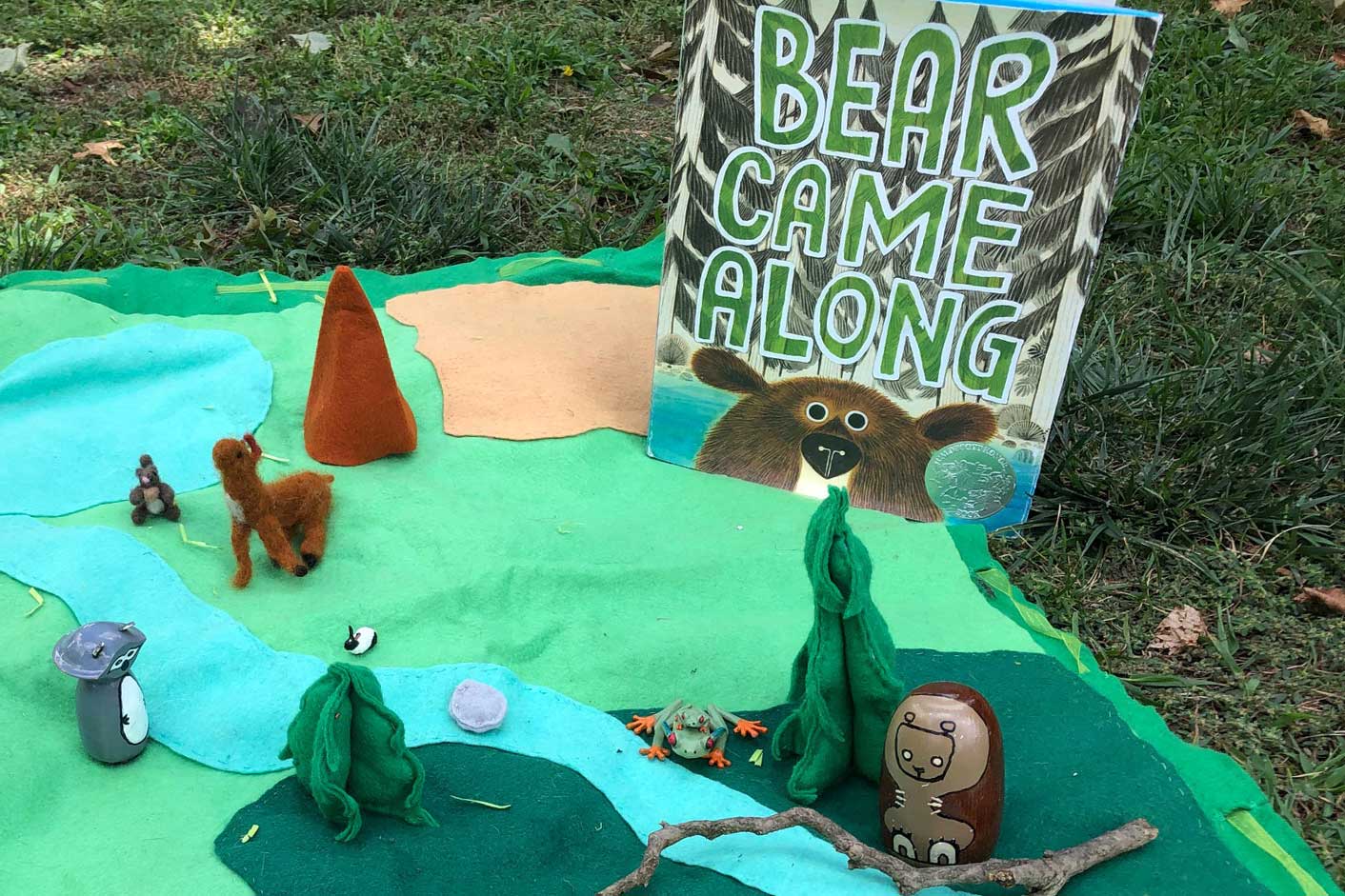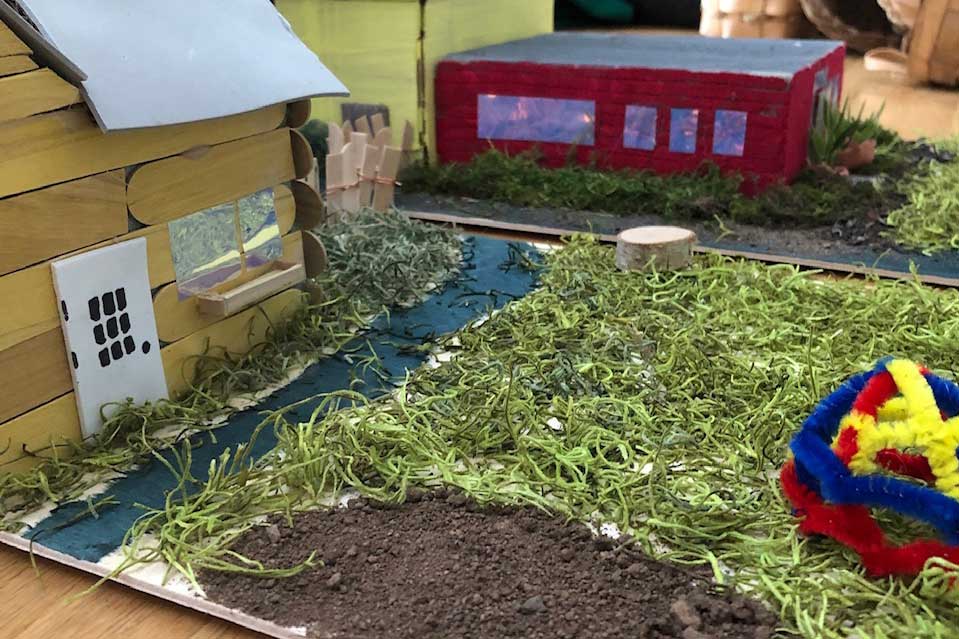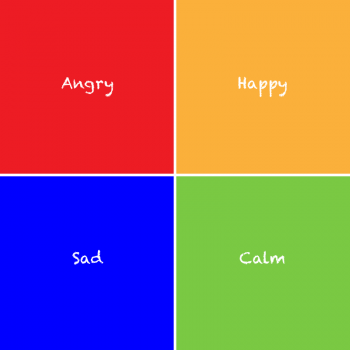Bear Came Along: Activity Pairings
See Author Richard T. Morris reads BEAR CAME ALONG
(May 2020, B&N Storytime)
Interacting with the Story
Set up a miniatures scene for children to play with, including the landscape of the book and the animals of the book.
See image at right.
Invite children to create something that represents them which they can play with in the miniatures scene.

Building a Community of Learners & Addressing Emotions
Construct a homegrown mood meter chart together.
- What were some of the feelings of the characters in the book as they embarked in the journey of the unknown together?
- What are some of the feelings among the students (and teachers) in the class? (This could also turn into a grade-wide/school-wide survey for older students.)
Help students identify personal strengths and interests, and how they contribute to their various communities, including their classroom.
Create a class charter.
Mapping!

Create your own map of the school and its surrounding environment.
Use the map to set the tone for the learning experiences for the year, and help you take the learning outside.
- Did anyone find something that made them curious?
- How did the shell get to the playground?
- Why are the nut shells broken apart on the tree stump?
- Where did the broken pottery come from?
- Are there stories hidden in these treasures?
- What are you curious about here?
- To what extent can children’s curiosities and interests shape the curriculum?
Another “x” might include an invitation to gather sticks and make mud (or use glue) to create a shelter for the animals students previously made to represent their strengths. These structures can be created and left outdoors, made inside and put together to form a habitat, or can stand alone on children’s desks, where they can tend to those animals throughout the early weeks of school. Yet another “x” might lead students to the notebooks they’ll use for Writer’s Workshop or for as Science Journals, and ask them to find a special “sit spot” someplace where they can sit on their own in quiet, open their senses, breath, and connect. Draw/write about what you connect with. Use these sit spots throughout the year and record the changes that occur
The concept of learning experiences being treasures hidden on a map can go in any number of directions: The idea is to connect students with place and community in joyful shared experiences grounded in your curriculum, whether in person or at a distance. Inevitably, you will find that taking the learning outdoors naturally brings children together and integrates science, technology (simply put: tools designed to solve problems…think sticks, pulley systems, ramps, etc.!), engineering, art, mathematics, reading, writing, social studies, music and movement.

